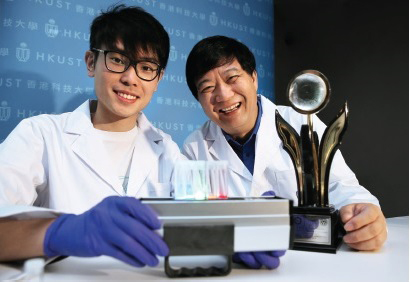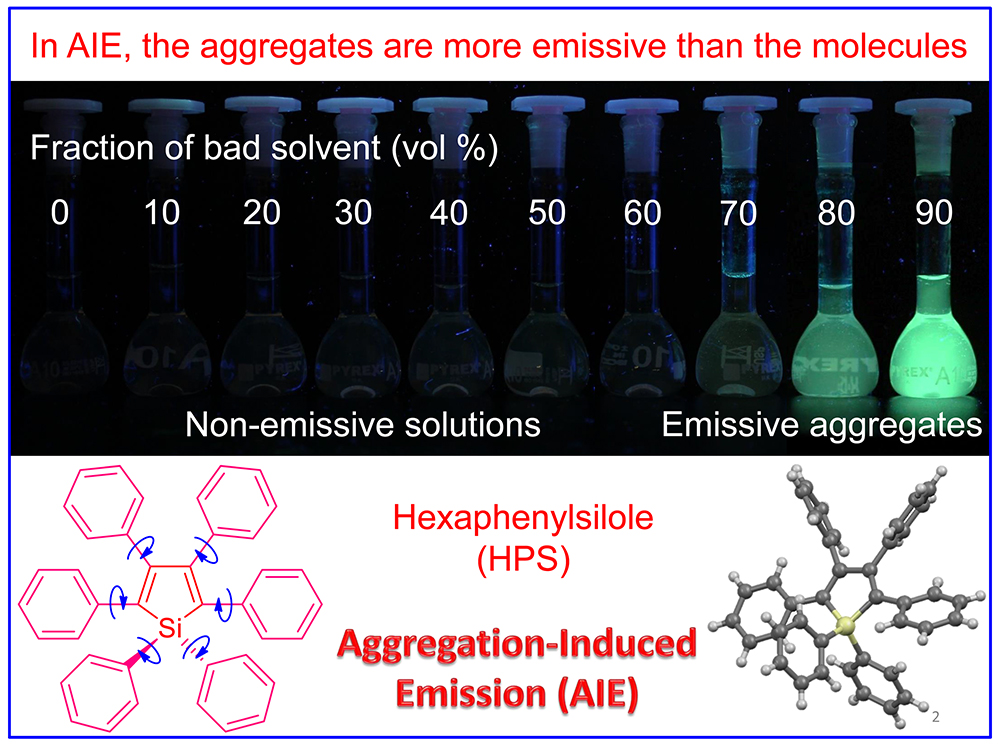Father of AIE


Aggregation-caused quenching or ACQ is a known phenomenon of luminescent materials emitting weak or no light in concentrated solutions or solid state. On the basis of abnormal emission behavior in certain molecules that exhibit the opposite effect was revealed by Prof Benzhong Tang and his team coined a new scientific concept, aggregation-induced emission or AIE, and unveiled a plethora of applications of the AIE-active luminogens or AIEgens.
For his conceptual breakthrough and continuous work on AIEgens, Prof Tang has been granted support for the establishment of a Hong Kong branch of the Chinese National Engineering Research Center for Tissue Restoration and Reconstruction since 2015. With the wide spectrum of potential applications in biomedicine and healthcare, specifically for cell tracking, tumor imaging, vascular visualization, biosensing and microbial detection, The Center aims to provide a platform for further research on AIEgens as well as to encourage industry collaboration for knowledge transfer. Outside the realm of healthcare, AIEgens have far-reaching uses as forensic sensors, smart materials, liquid crystals and OLEDs. Prof Tang’s team now concentrate on discovering novel luminescent materials and their high tech applications in these diverse areas.
Prof Benzhong Tang is Adjunct Professor in the Department of Chemistry. He is a member of the Chinese Academy of Sciences. Prof Tang has been listed as a Highly Cited Researcher by Thomson Reuters in both areas of Chemistry and Materials Science, received the State Natural Science Award (1st Class), and is a Croucher Senior Fellow. He is the Editor-in-Chief of Materials Chemistry Frontiers (RSC & CCS).